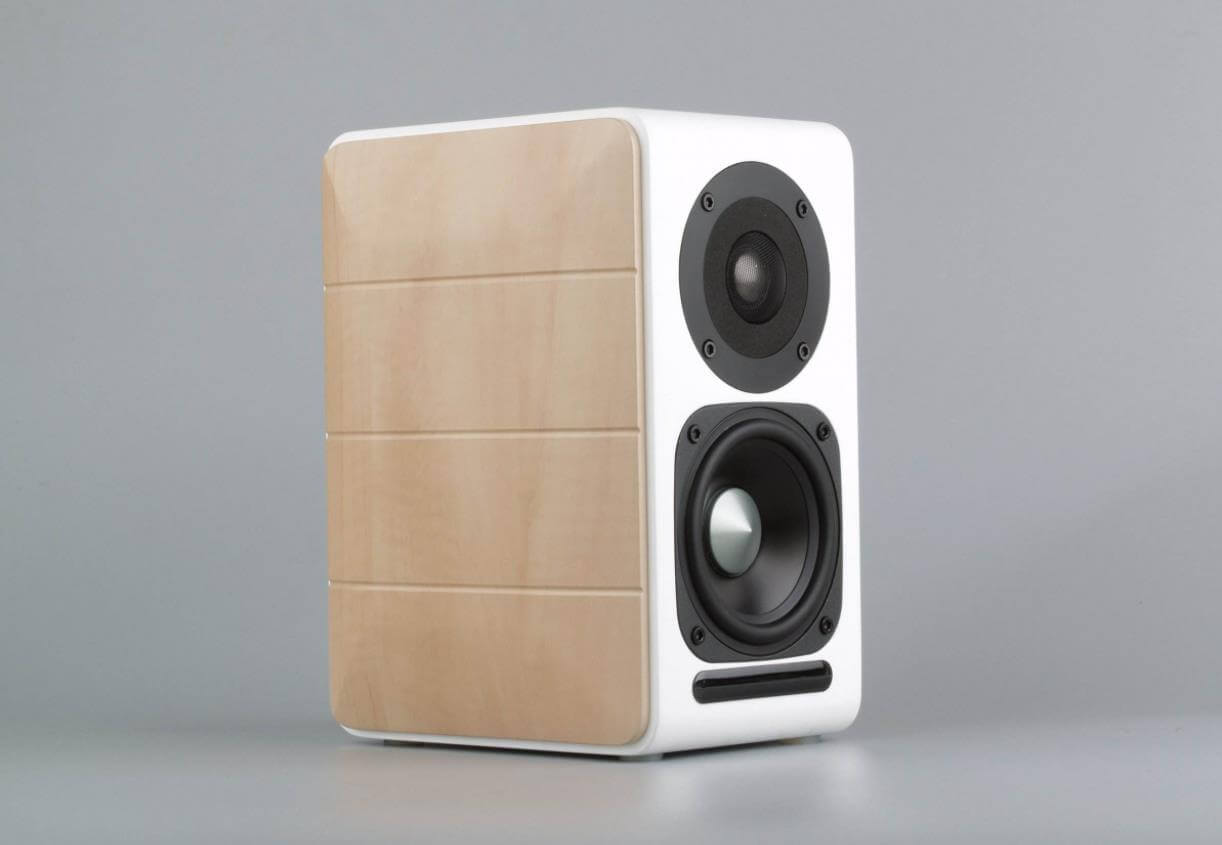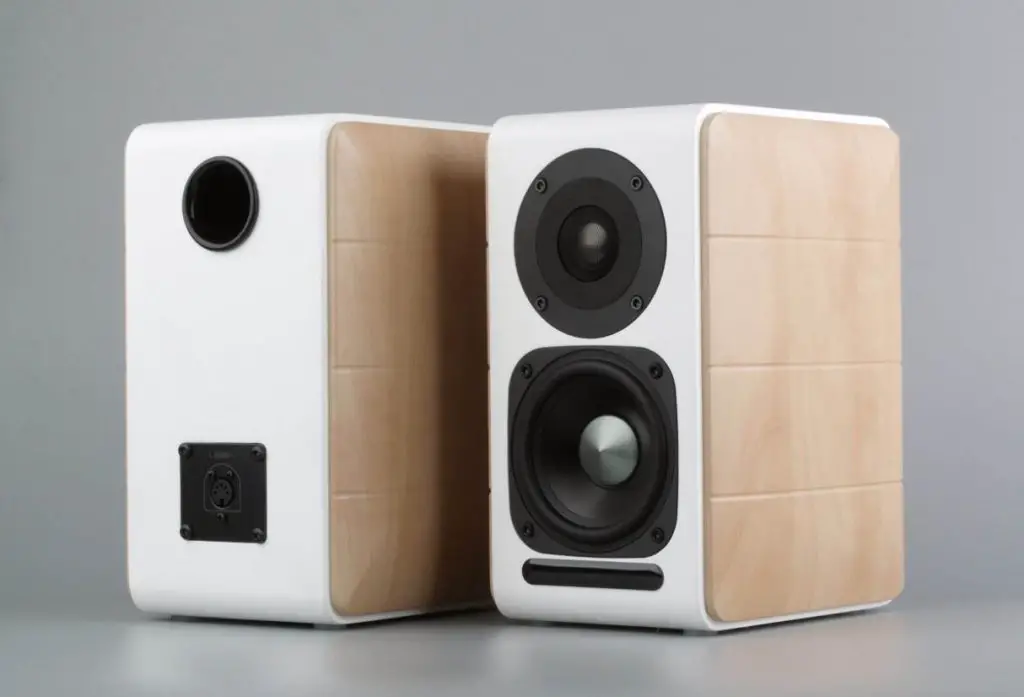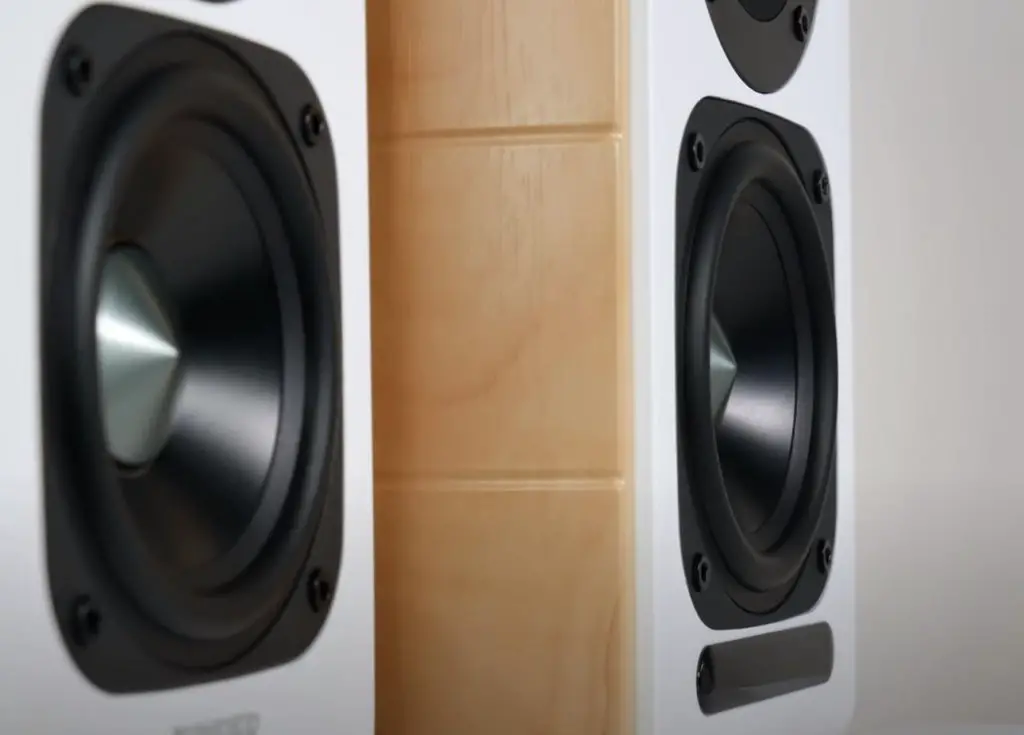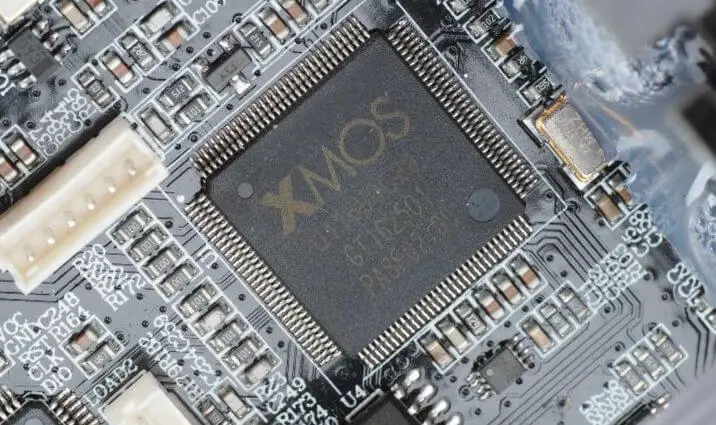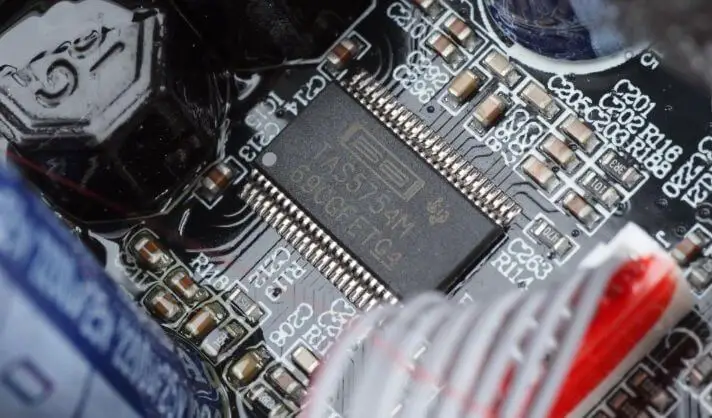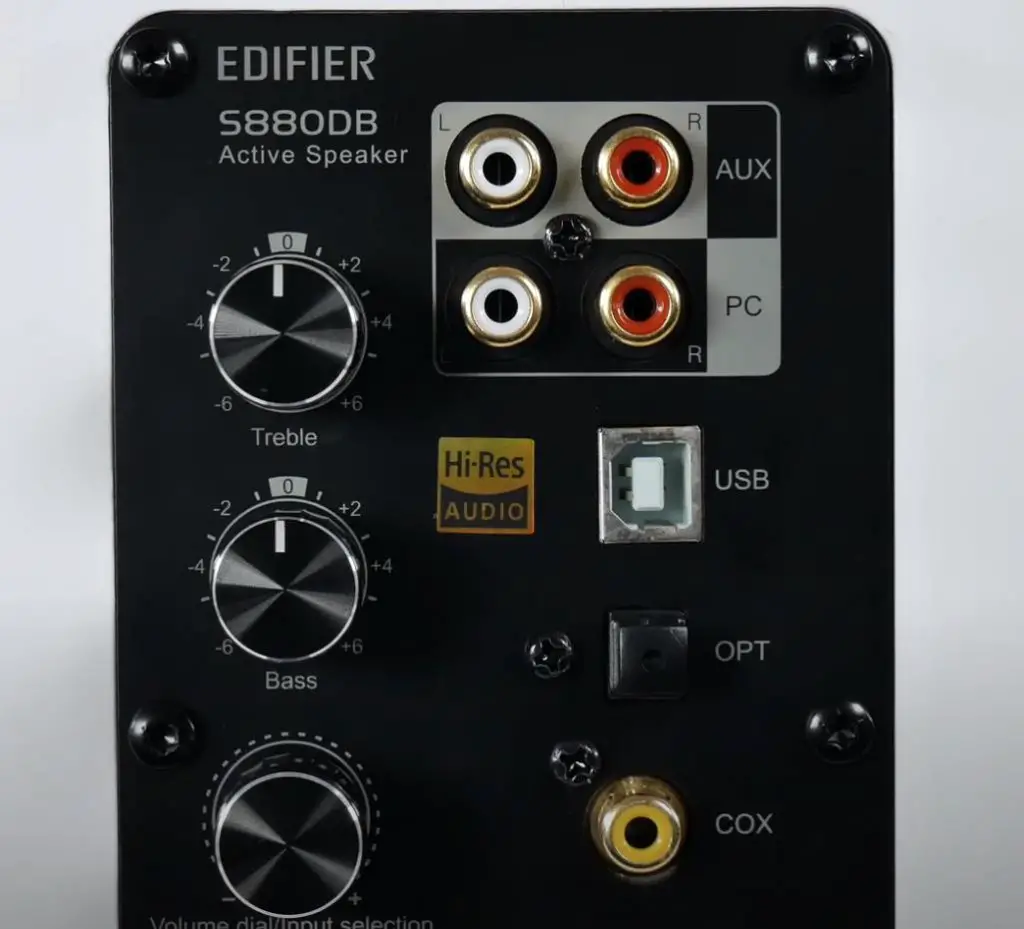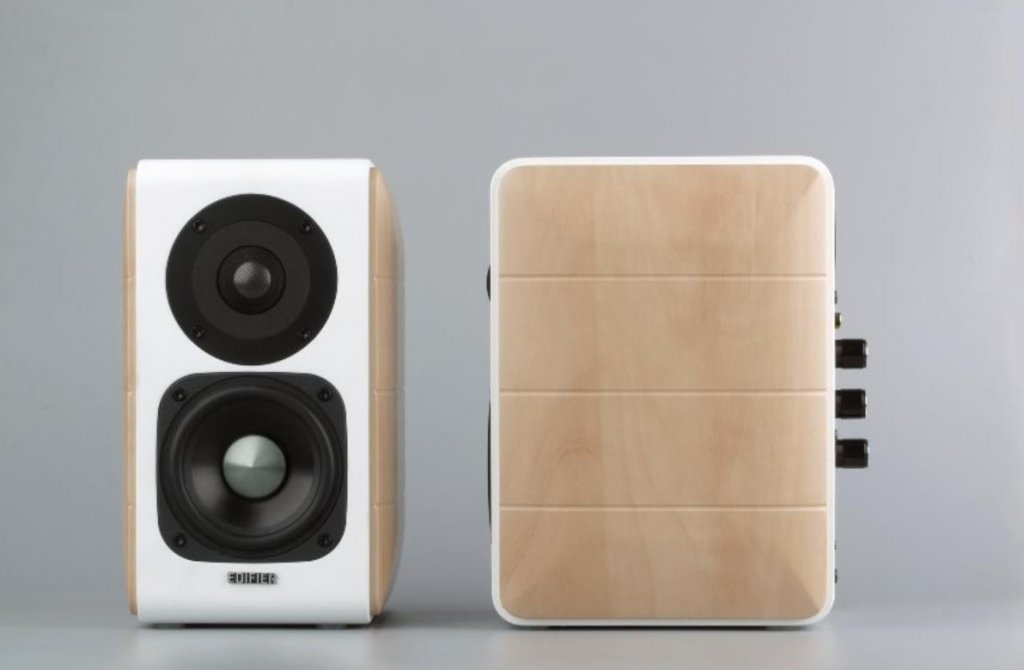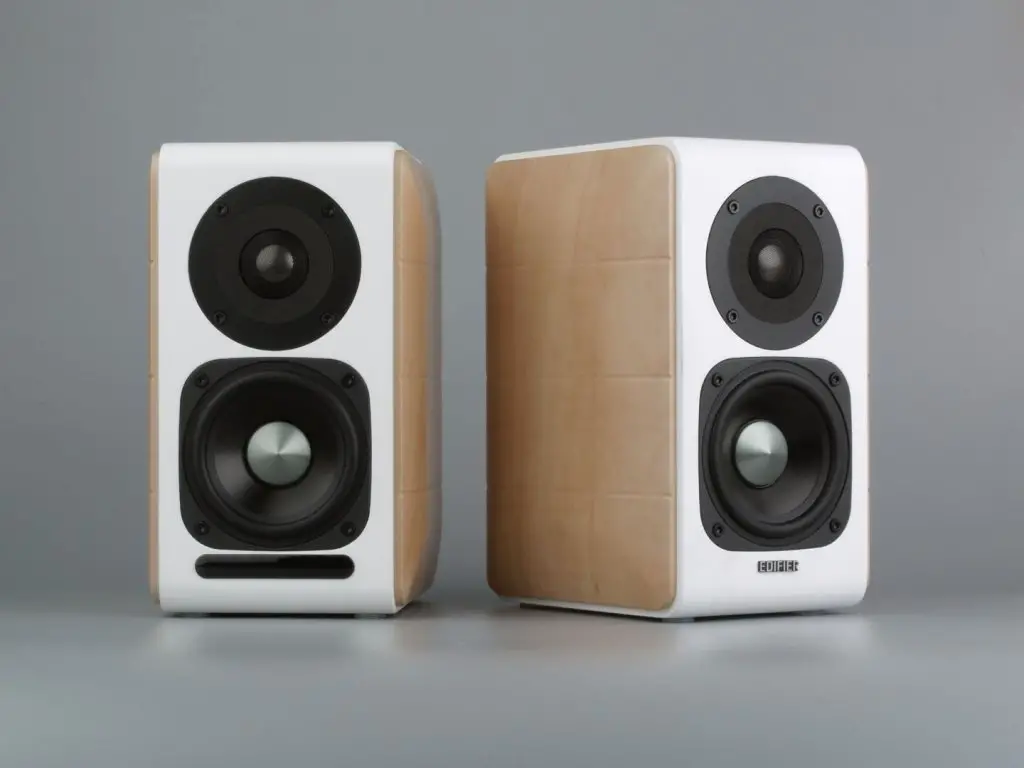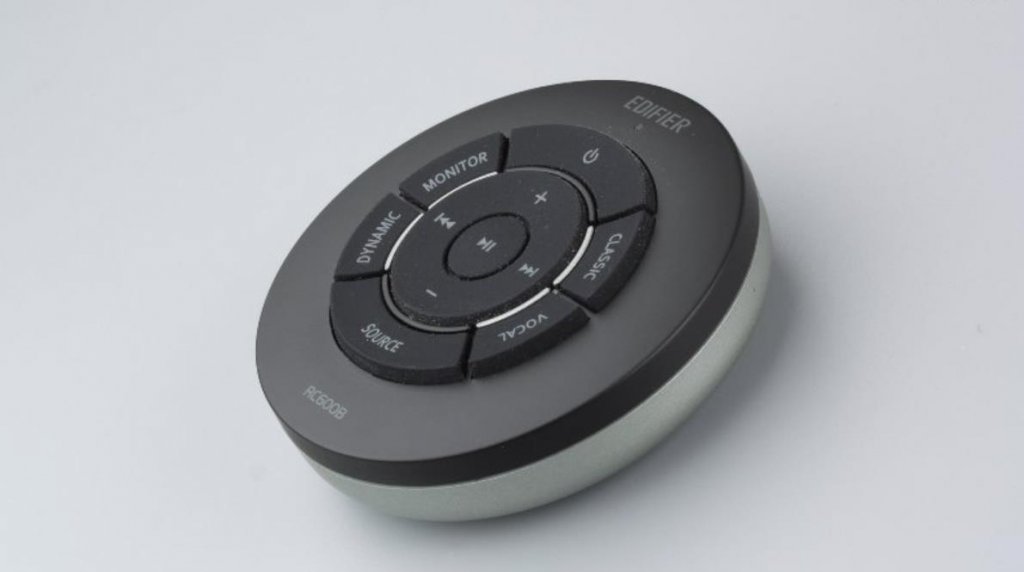Edifier S880DB Review
Edifier S880 DB is a compact 2.0 speaker. The combination of size, appearance, and color makes it look different from the previous S series and R series. The size and color make it easier to integrate into the home atmosphere. It is more challenging to make good sound with a much smaller size. The leading technology platform of S880 DB is based on the previous S series, but the core function part has also made a significant upgrade.
Design
We have one active and one passive speaker, an optical audio cable, RCA to 3.5mm cable, RCA to RCA cable, speaker connection cable, USB cable, power cable, and a circular remote control. This speaker set is not just designed to look and sound great with its stylish wooden exterior, smooth overall finish, and vast dynamic range, but it also has practical features like Bluetooth.
The right speaker identified by the display and infrared sensor on the front contains a built-in amplifier and all the connectors you could ever need for audio input. Control knobs to adjust treble and bass levels and a manual input selection knob that doubles up as a volume control all have excellent smooth movement. Input selection is made by clicking the knob in and volume by turning left and right.
In addition to these, there is an infrared remote control that allows you to change EQ modes, volume, audio source, and standard audio controls for connected Bluetooth devices. The left speaker, the one with the E
difier logo, is passive and accepts the audio signal from an output on the right speaker’s back. The cable used to connect these is very well reinforced and durable.
The appearance of the Edifier S880 DB made us a little surprised because, after the emergence of the S series and Airpulse A200, many enthusiasts are calling for the Edifier to launch a model with better bass and a larger size woofer. And the other enthusiasts hope to have one Small and exquisite suitable for small speakers placed on the desktop. We have just seen the emergence of the S350DB 2.1 speaker. The speakers on the satellite box show everyone the Edifier’s results to further extend the new R series and S series speaker technology-similar structure and materials, different sizes, and market targeting.
Hardware Design
Driver Unit
The top half of the speaker contains a titanium laminate tweeter 19 millimeters in diameter, providing bright mid-high to high range audio, while on the bottom half, there is a 3.75-inch metal diaphragm base unit bringing on punchy bass and strong mid-range tones. This speaker also uses a metal aluminum cone diaphragm and a cast aluminum cone frame. Although the size is small, the materials and configuration still maintain a high level.
Two small speakers are placed in a 138x168x230mm box. Its volume is less than 40% of the S1000, and the visual effect looks even more compact.
The technology platform of S880 DB is based on Edifier’s mature digital crossover and digital power amplifier technology over the past few years. This technology performs well on the low-end R series and performs well on the high-end Airpulse A200.
USB interface and DSP
The USB interface added by S880 DB is built-in support for the USB Audio interface. This function is called a USB DAC mode.
S880 DB uses the latest xCore200 series XU216 chip of XMOS. This chip is more powerful than the previous U8 in the Hi-Res catalog of XMOS. It can provide 768kHz and DSD512 level interfaces in audio equipment. S880 DB uses this XMOS chip to provide 24bit/192kHz input in USB mode. Currently, it does not support DSD. The limitation of the digital power amplifier chip does not support 2x and 4x sampling rates of 44.1kHz. It supports UAC2 specifications and can work without drivers under Android, iOS, macOS, and Linux.
But the work of the XMOS chip here is not as simple as the USB Audio interface. According to the introduction of XMOS, the 32bit DSP inside the xCore200 chip can provide powerful performance and functional support. Edifier uses its own specially customized firmware and uses this chip to complete the TI TLV320AIC3254 DSP in the original digital frequency division system. In XU216 of XMOS, digital crossover, digital volume control, DSP speaker compensation, and sound effect mode are completed.
S880 DB also uses XMOS asynchronous USB mode and uses two sets of clock PLLs of 44.1kHz and 48kHz and multiplier. Compared with TI’s DSP, I believe that the newer XMOS chip has more substantial computing power and technical indicators.
The XMOS chip’s emergence is a double effect for the S880 DB and multiple benefits for the Edifier speaker and product line. If the USB Audio part is satisfactory, it will greatly help all users’ experience, and it may cause a significant impact on the traditional HiFi small circle.
Digital Power Amplifier
The S880 DB still uses TI’s TAS5754 digital power amplifier chip in the digital power amplifier section, which has more than enough power. Two TAS5754 are responsible for the treble and mid-bass channels of the S880 DB. The high-frequency channel power is 12Wx2, and the mid-bass channel power is 32Wx2. This set of parameters is the speaker’s theoretical RMS power, and the amplifier itself does not provide such a considerable power. The maximum output power of the external power supply of the S880 DB is only 18V 3A, 54W.
ADC and Digital Input
S880 DB uses the previously common TI BB PCM9211 chip for traditional audio input. This chip supports both ADC work and digital signal input. It supports digital signal input up to 24bit/192kHz. For Bluetooth, Qualcomm CSR8645 is used. Bluetooth receiver chip, this chip can support apt-X encoding connection.
Edifier has done Hi-Res certification for S880 DB. Hi-Res audio describes a digital audio father is better than CD quality. Due to compression, CD and other digital formats are downsampled, which means that the number of samples is reduced from the original recording, which equals a loss in quality. Think of examples like megapixels on a camera. The fewer megapixels there are, the less to find the image would be. It’s the same with audio. The fewer samples there are, the less defined the audio will be. The S880 DB speakers can play these higher sampled files that give a much closer representation of the original recordings’ quality and clarity.
Main Function
The speaker’s function is often clear at a glance, so here is only a brief introduction. The rear input part of S880 DB is still the traditional design. S880 DB pays attention to the beautiful appearance and the affinity for the home. S880 DB provides two sets of RCA analog input. PC and AUX represent 700mV and 500mV input sensitivity, respectively. What needs to be confirmed here is that although the input sensitivity is much lower than 0dB of 2Vrms, I confirmed and measured the Edifier’s ADC can support 2Vrms input. This voltage input will not cause the digital signal to overflow and pop. But for those with sound effect modes like S2000 and S880 DB, the maximum input voltage value may be lower.
Edifier S880 DB also provides one RCA coaxial and optical input interface for the S/PDIF signal. The USB interface is a square USB-B standard interface. LED lights indicate these input ports’ status with different words on the front panel area of S880 DB. As a compact desktop, this small status bar is more useful for speakers that are generally closer to users. But every time you switch the input, you have to wait 1 second, and you can only switch in order. Although there are many buttons on the remote control, they are all left for the sound effect switching, and the source can only be selected one by one, so this experience needs to be improved.
There are four preset EQ modes. The monitor is meant to reproduce original and accurate sound, almost like a pass-through of the original audio. Classic mode produces a classic HiFi sound with a lot of warmth and familiar tonal quality. Vocal mode highlights the vocals in the song and adds brightness to instrumental and orchestral pieces. Dynamic mode boosts the audio’s dynamic range, adding a lot of volume and depth to the output.
Sound Performance
From the perspective of strictly listening to music, S880 DB should still provide a stable desktop and enough space on the back. After all, it is a rear port design. Therefore, it may be suitable for a spacious desk. If you can handle the connection line well, listening to music will not be affected by the space and placement too much. Of course, in the test comparison, S880 DB is still placed in an ideal space and on a typical desk.
In terms of the sound source’s effect on the sound quality, I want to verify the sound performance of the S880 DB under its different USB inputs, different digital signal inputs, and different analog inputs. The purpose of these verifications is to find a suitable match for the user and verify the USB Audio’s performance under the S880 DB XMOS. In addition to the USB audio interface, this XMOS chip also has to deal with digital frequency division and DSP. That is to say, the digital input and analog input signals also have to be managed by the DSP of the XMOS chip.
High-Frequency Performance
The treble style of the S880 DB has become more restrained, while the transients of the high-frequency part under loud sound pressure have become more comfortable. The extension of the UHF has no traces of uplifting but is softer. This makes some high-frequency percussion sounds more natural, and string music is also more soothing.
Mid-Frequency Performance
S880 DB’s midrange is excellent. The distance between the two speakers is closer, and with the digital crossover, the mid-frequency of the S880 DB, especially the human voice, is very prominent. The Edifier’s digital crossover and digital power amplifier have achieved much better accuracy and solid imaging power than the average level of traditional passive crossover in the two-way speaker. And this small S880 DB may do better. If you put the speakers on the desktop and use them at a closer distance, you can better appreciate the advantages of this part of the sound details.
Low-Frequency Performance
In the lower frequency range, such as the cello, the sound of the S880 DB is solid and robust. For vocals, soothing instrumental music, small and medium dynamic performance of various mid-frequency and even mid-low frequencies, the performance of the S880 DB can be described as stunning, and the dynamics must be far better than full-band speakers of similar size.
With the low frequency of the S880 DB in such a small cabinet and small speakers, Edifier chose to give the S880 DB a more neutral and even more controlled low-frequency design. The overall style of S880 DB is still the pursuit of a balanced and neutral taste.
This ensures that the S880 DB has a very solid mid and low frequency and a relatively clean low-frequency performance for small and medium dynamics. As a two-way small bookshelf box with a 3-4 inch mid-woofer unit, S880 DB still provides excellent mid- and low-frequency resolution, and the low-frequency is relatively fast in the slow transient under medium and small sound pressure reaction. But if the Edifier is willing to get rid of the volume of lower frequencies, the S880 DB’s mid-and low-frequency performance may be cleaner.
USB Input Mode Performance
The S880 DB’s USB audio interface’s performance is actually of great significance to ordinary users because the sound source on this level of speakers does significantly limit their final performance. Compared with the excellent performance of XMOS pure digital input S/Pdif, the performance of S880 DB under the USB interface is not inferior, and the style is slightly different. When connected to a PC or Mac computer, the S880 DB’s USB mode can provide sound quality that is not weaker than the overall level of high-quality XMOS digital input.
With S880 DB’s USB and digital inputs, high-frequency quality is guaranteed. However, under USB and digital inputs, the low-mid and low frequencies’ thickness has become inferior to analog audio sources. The dynamics of low and medium frequencies under USB input are inferior to XMOS.
Pros and Cons
Edifier S880 DB is a traditional 2-way 2.0 speaker. Its mid-woofer is only 3.7 inches in size, but it still uses aluminum diaphragms. With a 19mm titanium film tweeter, it is excellent in high-frequency transients, extremely high-frequency details, the vocal affinity between high-frequency and mid-frequency, and the entire mid-range and sound imaging.
S880 DB has two apparent disadvantages. The low-frequency speed cannot be too fast, and the overall dynamics cannot be too large, which is also in line with such a small speaker’s characteristics. The mid-frequency of the S880 DB, under such a small-diameter speaker and a small cabinet, achieves better dynamics than ordinary 3-4 inch full-band speakers and a more reliable and full mid-low frequency.
The emergence of the USB interface allows ordinary users to easily experience the S880 DB speakers without purchasing additional high-end sound cards.
For the use environment, the compactness and appearance of the S880 DB may allow users to choose a more casual or small space to use. Put it on a desk and appreciate this speaker at a distance of 1-2 meters, then its mid-frequency and high-frequency detail advantages will be more outstanding.
Conclusion
The emergence of the Edifier S880 DB is logical from the perspective of the technology platform currently owned by the Edifier. Compared with the S1000, S2000, and Airpulse series, the S880 DB aims to occupy a younger market. And such a small cabinet makes it natural for you to place it anywhere.
For ordinary users, S880 DB has high sound quality and high-cost performance under the same box size. For audiophiles, beginner audiophiles have a USB input to ensure that the audio source does not limit the minimum sound quality of the S880 DB. It is also convenient to connect to Android and iOS devices.
If you want to be able to enjoy popular vocals whispering in your ears on your desk, you want to buy a set of small 2.0 bookshelf boxes in your study or living room, and hope this pair of bookshelf boxes look good. If so, then S880 DB is indeed a set of products worth considering.
